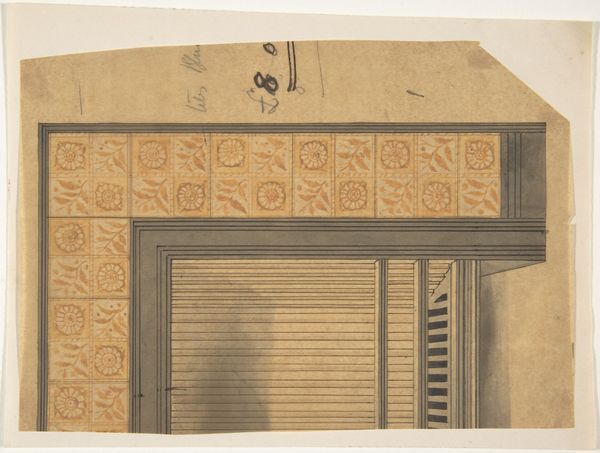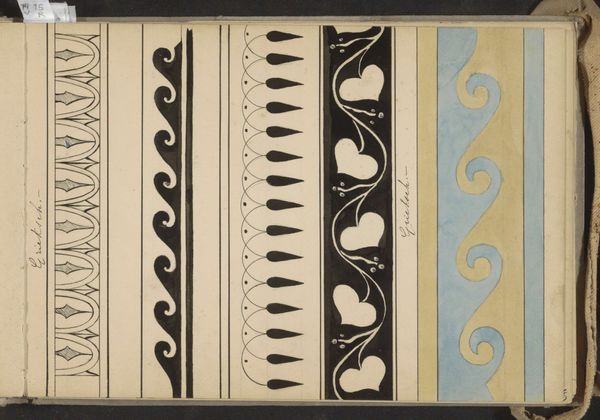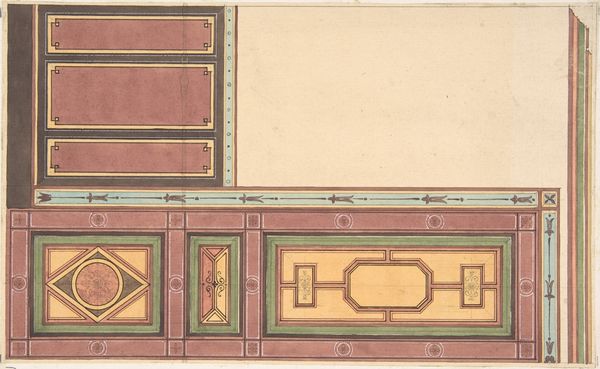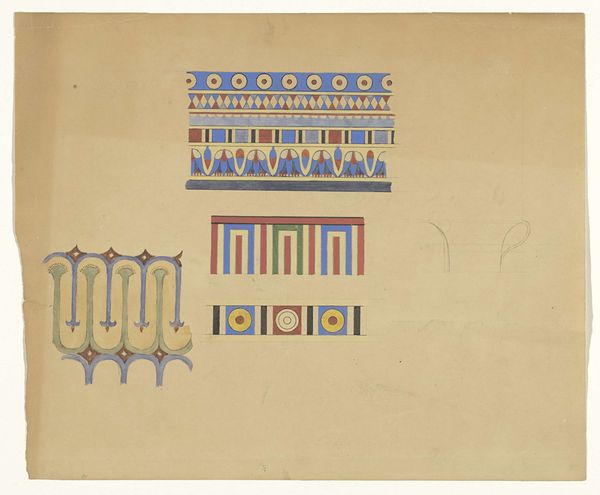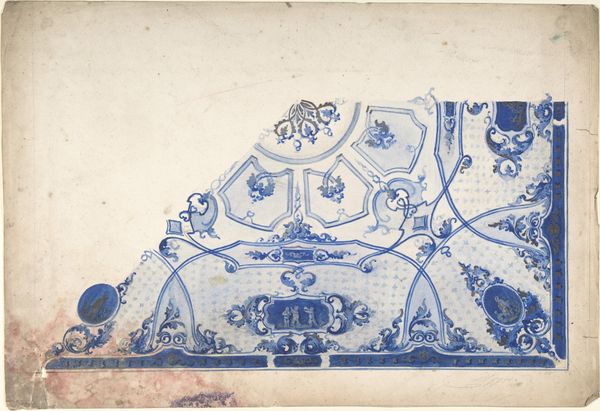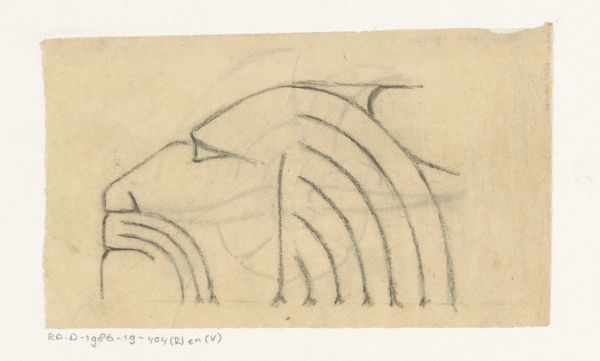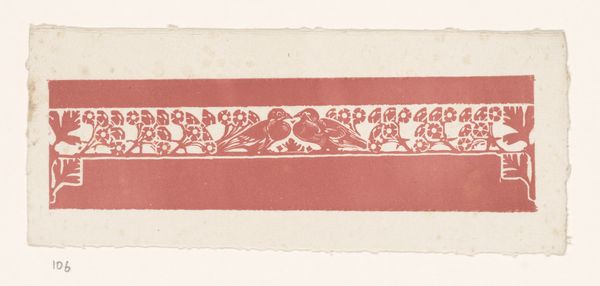
drawing, mixed-media, watercolor
#
drawing
#
mixed-media
#
art-nouveau
#
allegory
#
landscape
#
watercolor
#
symbolism
#
watercolour illustration
#
watercolor
Dimensions: height 81 mm, width 299 mm
Copyright: Rijks Museum: Open Domain
Curator: Welcome. We’re looking at Antoon Derkinderen's "Waterman, Vissen en Ram," created sometime between 1869 and 1925. It appears to be a mixed-media drawing, employing watercolor to achieve its effect. Editor: The colors are surprisingly muted, aren’t they? It evokes a feeling of ancient frescoes, something unearthed from a villa in Pompeii. But I can't quite place it… is it decorative? Or functional in design? Curator: Functionality may be its primary concern. Observe the triptych structure: three distinct panels, separated by architectural, pillar-like divisions. The art nouveau stylized zodiac signs on the salmon backdrop—aquarius, pisces, aries—could be part of a frieze for interior decoration. Editor: A home perhaps? The zodiac signs lend a certain domesticity. I can also envision it as the preliminary artwork for some monumental, public work... something about the symmetry gives it such grandeur. The symbols, so clearly of their time, intersect surprisingly with images derived from earlier ones: water bearers feel ancient while also being thoroughly Art Nouveau in rendering. Curator: Indeed. There is a beautiful tension at play. I am also struck by how the mixed-media contributes to a flattened plane. This visual effect is augmented by the fact that this horizon doesn't rely on perspectival depth to convey three-dimensional space; its depth comes entirely from color and design relations within a composition where color is used symbolically. Editor: And with the zodiac symbols in mind, let us also not overlook how often astrology, both as a symbolic language but also as a science, was practiced among women, particularly domestic women who may have relied on the home as both a respite, but also a location from which their work and ideas are born. How would this potential reading of its intended audience or context color your own read of this work? Curator: The beauty of its symbolic simplicity and decorative purpose becomes enriched by the potential sociopolitical realities surrounding its origin. Editor: And perhaps a glimpse into futures not yet known. A domestic aesthetic that points to larger existential ideas.
Comments
No comments
Be the first to comment and join the conversation on the ultimate creative platform.



